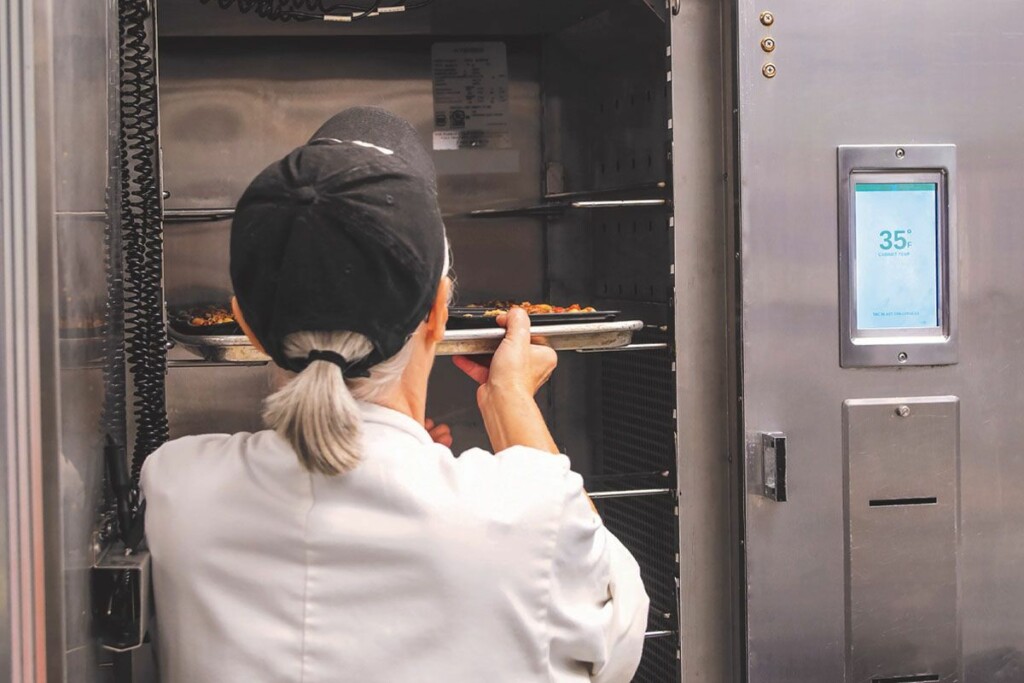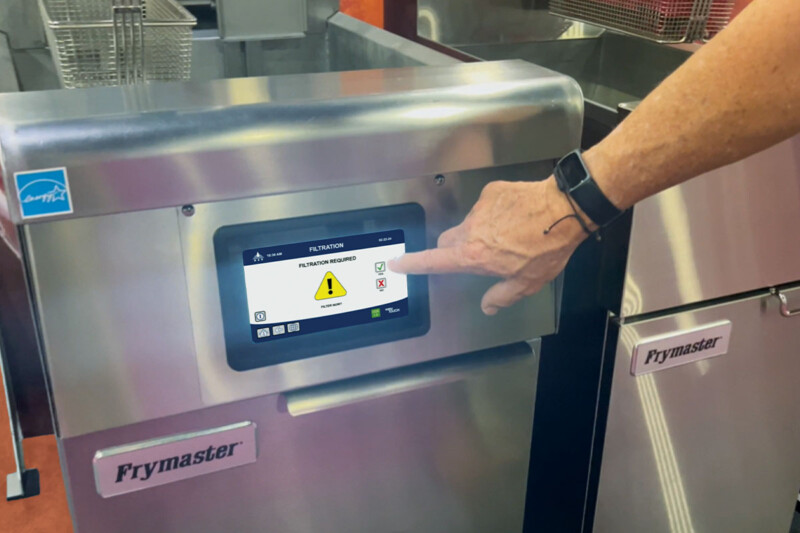Blast Chiller Do’s and Don’ts
Defrosting, cleaning condensers and probes, and regularly training employees keep equipment in top shape.

Blast chillers boost efficiency in operations, help maintain the integrity of food prepped ahead of time, and ensure food storage temperatures are met for food-safety protocols. Keep a unit in top running order to maximize the efficiency and productivity it can bring to your kitchen.
“When blast chillers aren’t running at their peak performance level, you’ve really got nothing but a high-powered refrigerator,” says Don Jones, refrigeration service manager, EMR.
Follow these do’s and don’ts when it comes to maintaining blast chillers:
DO RUN DEFROST REGULARLY IF IN MANUAL MODE. With each cycle it’s the same routine—hot food goes into a cold environment, creating steam. The amount of condensate produced in a blast chiller is more than a typical refrigerator because a lot of moisture is removed from the food during the cooling cycle. As the interior cools down quickly to below freezing, that moisture collects as frost on the evaporator coils. As frost builds up it acts as an insulator to those coils and blocks airflow. Over time, the buildup will decrease the efficiency of the machine, causing longer run times and higher electric use.
The key to preventing this problem is running the defrost cycle on a regular basis. In automatic cycle mode the units defrost every four to six hours, depending on the setting. When using the manual mode, it’s up to the operator to initiate the defrost cycle. The defrost process takes about 15 to 20 minutes. “Some operators decide to override the defrost cycle and continue using the equipment, thinking they’re saving time,” says the technical service manager at one manufacturer. “But bypassing that cycle only costs time in the long run with longer operating times.”
DO KEEP CONDENSER COILS CLEAN. Blast chillers have larger fans and other components compared with regular refrigerators and also pass a greater volume of air, which means they accumulate grease, dust and debris quicker. Experts recommend cleaning the condenser coils every 30 to 90 days, depending on the conditions in the kitchen.
DO KEEP THE INTERIOR CLEAN. In addition to sanitizing the interior as you would with any refrigerator, there are a couple of other processes important to blast chillers specifically to help keep the inside of the equipment from becoming a breeding ground for mold and bacteria and contaminating the food. To start, if you have really juicy foods, such as chopped tomatoes, consider using the covers that come with the trays to keep the forceful movement of air in the blast chiller from spreading the ingredients around the interior. Also, instruct employees to prop the door open at the end of the day to allow the interior to dry completely overnight.
DON’T IGNORE PROBES. When used properly, the probe tells you exactly when the food has come to the appropriate temperature. But if probe wires become kinked from getting shut in the door, have corrosion from not being wiped down when wet, or aren’t placed into the food properly, the temperature readings can’t be trusted. Wipe the probes down after each use to prevent corrosion. Calibrate probes regularly to make sure temperature readings are correct.
DON’T UNDERESTIMATE THE NEED FOR REGULAR TRAINING. User error is one of the most common reasons for inefficiencies in blast chillers. Regular training on how to use the equipment properly can help ensure food-safety protocols are met and also prevent long-term damage to the equipment. For example, if employees open the door in the middle of a cycle, the compressor may run constantly rather than cycling on and off.
Quick Tips for Efficient Use
• Stack trays according to manufacturer recommendations for appropriate airflow.
• Let the cycle run completely before opening the door so the compressor doesn’t operate constantly.
• Place probes in food (versus nothing at all) for accurate temperature readings.
• Run defrost on a regular basis.
RELATED CONTENT
- Advertisement -
- Advertisement -
- Advertisement -
TRENDING NOW
- Advertisement -
- Advertisement -
- Advertisement -


